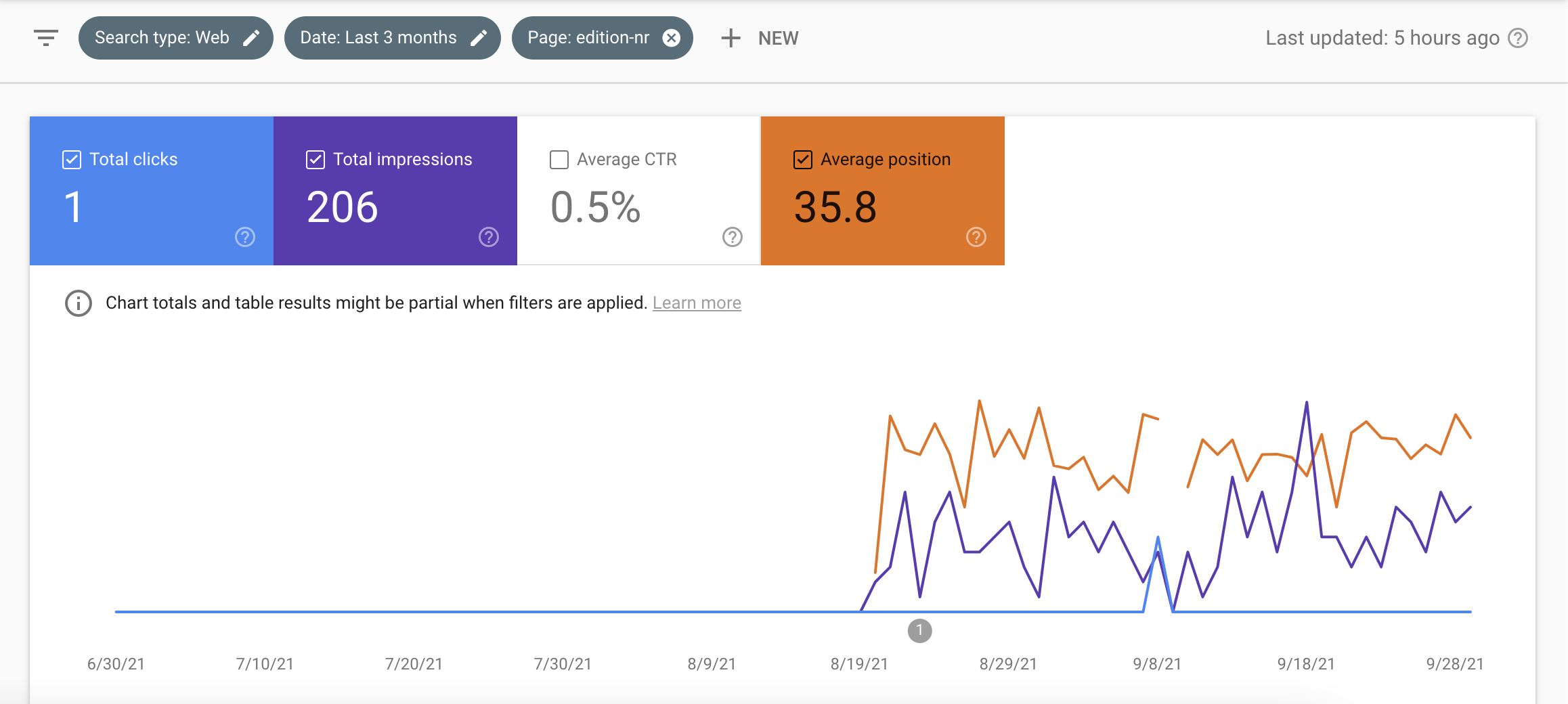Back in February 2021, I decided to try out Substack for our newsletter. People (many with significantly larger audiences than mine) talked about it, and it promised to make running our email publication easy and enjoyable.
The benefits of writing on Substack
Substack made it very easy to get started. If you want a clean text editor to write down your ideas and a send button to email them to your readers, there is nothing more straightforward to use than Substack. It also makes it easy to accept sign-ups and monthly payments for premium membership content.
Why using Substack was a mistake for us
The downside of running our newsletter on Substack became clear about half a year into the project. During that period, we published around 30 articles, non of which was receiving organic traffic.
Some important factors:
- We used Substack with a newly registered custom domain
- We promoted our publication consistently on social media and linked to it from our business and personal websites.
- We introduced good interlinking between the weekly newsletter editions
So, what are the SEO disadvantages of Substack?
At this point, you may wonder if that’s the norm and if things could have been different if we’d used another platform. I think in our case the lackluster results were due to the following reasons:
Reason 1: Substack’s primary focus is making it easy for people to run premium (paid) membership email publications.
Although you can have a free membership subscription tier, and free content can be made available to everyone on the internet, I have a feeling that it’s still an afterthought compared to Substack’s primary business direction. Therefore, there’s little control over your published content or advanced SEO options built into the platform.
Reason 2: Google doesn’t like new websites, and every substack newsletter is one.
In the SEO industry, people often refer to a new website’s first 6 to 12 months as “being in the sandbox.” Google wants to see that you publish consistently good quality content, run a technically sound website and play by the rules regarding links before they start sending traffic your way.
This is often the case for newly registered domains and even subdomains under your main business website. After all, every subdomain, e.g., example1.your-site.com, example2.your-site.com, is technically a different website.
We decided to register a new domain for our newsletter, but I believe it would’ve made little difference if we used a subdomain provided by Substack instead, for example, “our-newsletter.substack.com.”
Show me the numbers
Despite passing the 6-month mark, our publication failed to gain significant visibility on Google, even for long-tail marketing keywords. That’s not a very long time SEO-wise, but it should have been enough time to show some promise, at the very least.

In comparison, one month after moving all our newsletter content over to our main WordPress site, it has received more Google visibility than in the previous 6-months of publishing on Substack.

How to move your Substack newsletter to WordPress
Moving from Substack to WordPress involves moving your existing content and setting up several systems to replicate Substack’s functionality.

How to move your content from Substack to WordPress
Step 1: Importing your content
Importing the content was the easiest part. We used the Substack Importer plugin to copy our content, author information, and images to our WordPress blog. The import process was not perfect, though; a few posts didn’t make it over to WordPress. Nevertheless, this sped up the migration process significantly.
Step 2: Formatting your content
After everything was imported, we manually reviewed each post for formatting errors. Thankfully, Substack Importer works well with WordPress’s Gutenberg editor, and there were only a few such instances.
Step 3: Setting up redirects
Substack doesn’t provide a way to create redirects or add canonical tags, so moving your content away from its platform can lead to broken links, lost backlinks, and duplicate content issues. For this reason, we decided to use a custom domain with Substack right from the beginning.
After migrating our content to WordPress, we used Cloudflare to set up redirect rules for the domain we’d used with Substack. This way, we could redirect all of our old pages to their new addresses on our WordPress website.
Step 4: Metadata and optimizations
Moving the content over is half the picture, though. Every post should have an optimized URL, a proper title, and a meta description. My favorite tool for doing this in WordPress is Yoast.
Step 5: Replacing Substack’s functionality on WordPress
Now that the content was finally ready at its new home, it was time to set up our website functionality for running the weekly newsletter. Substack offered the following distinct elements that we wanted to replicate:
- A sign-up page for new Subscribers
- An archive page with all the content
- Email marketing platform for messaging our subscribers
We decided to design the sign-up page with Generate Press, our theme builder of choice for a native WordPress feel. Since we wanted our newsletter content to live alongside everything else in our blog, we created a WordPress category that houses the newsletter archive.
For our email marketing platform, we decided to stick with Mailchimp. We find it a bit slow and clunky, but it’s predictable, and it somehow is the only email marketing platform we have stuck with throughout the years.
The only thing that didn’t work for us was the default sign-up forms from Mailchimp. The embedded form was difficult to work with and always felt out of place – even the “simple form” that comes preloaded with Mailchimp’s styles.
In the end, we opted for the Gravity Forms plugin. It allowed us to spin up a good-looking and fully functional sign-up page. Moreover, it’s a useful plugin to use throughout the site.
Last, we thought about replicating Substack’s membership functionality using Memberful. Ultimately, we decided against it since we are not keen on implementing paid newsletter tiers. The current functionality works, and we’re happy to continue with it.
Final thoughts
Moving a newsletter from Substack to WordPress doesn’t sound like a big project at first glance. But once you begin, the level of detail that goes into every aspect of the project snowballs.
From designing sign-up pages to troubleshooting email forms, creating email templates, and adjusting page metadata, I can surely attest that moving from Substack to a self-publishing solution on WordPress is tougher than it sounds. On the other hand, it’s a step in the right direction we enjoyed taking.


